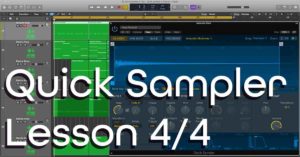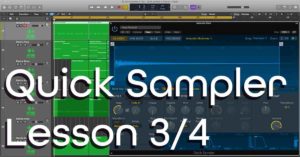Great songwriting is a combination of creativity and structure. To write something memorable and engaging, it’s important to have a clear process for your songwriting. This way, you’ll be able to write songs more consistently and will know exactly what to do when you get stuck. Even the best songwriters in the world follow a process to keep them coming up with new ideas over and over again. The great news is that there are only 5 simple steps to writing the perfect chorus or verse over chord changes. Let’s dive into how you can create catchy songs in just minutes from now…
Step 1: Find a great chord progression to write over
The first step in this 5-step formula for writing a song is to find a great chord progression to write over. When you’re writing over a progression, you want to use the chord tones in that progression as the foundation for your melodies. What are chord tones? They’re the notes that make up the chord you’re playing over. For example, let’s say you’re playing over a C major chord. The chord tones would be C, E, and G. You can see those chord tones almost as notes that provide colour from the chord. As you’re writing your melody, you want to focus on those chord tones to make sure your melody sounds right over the chord progression. To start out, you can either find a chord progression online that you like, or you can record yourself playing a progression on the piano or guitar. The key is to start writing melodies over a progression so you can get into a creative flow. This will help you get unstuck and start writing melodies faster.
Step 2: Write the hook first
The next step in this process is to write the hook first. A hook is the part of a song that you want audiences to remember. It’s usually the chorus or the “drop” of a song. So, when you’re writing your melody, start by coming up with the hook first. This will help you come up with a great melody that supports the feel of the progression. From there, you can start adding chords under your hook phrase. You can also add other parts like bridges, or verses after you write the hook. One way to come up with a melody is to sing the chord tones of the progression while you record yourself singing a melody. You can also write down any words or phrases that you want to include in the melody. Another way to come up with a melody is to use a melody writing method like the ones I teach in my online composition courses. These methods will help you come up with a melody that sounds right and fits the feel of the progression. They’ll also make the process a lot easier and faster.

Step 3: Add chords under your hook phrase
After you’ve written the hook, the next step is to add the chords underneath your hook phrase. The original chords you used can be adapted and substituted with chords that have common tones, this can add interest to both the progression and will help develop the overall mood and feeling of your song. For example, if you’re writing a happy love song, you’d want to use chords that sound happy and upbeat. You want to use chords that fit your melody and the overall vibe of your song. Try to use the fewest notes possible to play your melody over the chord progression. You don’t want it to sound cluttered and you don’t want to use too many notes. One or two notes per chord is a good rule of thumb.

Step 4: Come up with more hook phrases
Now that you’ve written the hook and added the chords underneath your hook, you can start coming up with more hook phrases. You can either use different lyrics or come up with different melodies that relate to your original hook phrase. The idea is to come up with different ideas that are related to your original hook phrase. This will help you write a more memorable song. To come up with more ideas, try to use your inspiration. What inspires you? What makes you want to write music? What excites you? What are you passionate about? What are you curious about? What are you interested in? These are all things that can inspire you and help you come up with more ideas for your song.
Step 5: Timing, percussion, and arrangement
The last step in this formula for writing a song is to get the timing, percussion, and arrangement of your song right. This will help make your song sound polished. The best way to do this is to record yourself singing or playing your melody over the chord progression and experiment with the different sections. In the DAW you can copy and paste sections so don’t be afraid to move things around to find interesting structures. Once you have a structure, you can start adding other parts like the drums, bass, and other instruments. You can either use the same chords you’ve already been using or come up with a new progression for different sections. This will help you add variety to your song while maintaining the original feel of the progression that you’re writing over. You can also add variations to the timing and the way you play your melody. This will help make your song more dynamic.
Conclusion
There are only 5 simple steps to writing a song. When you follow this formula, you’ll be able to write songs more consistently and will know exactly what to do when you get stuck. The key to writing songs is to have a consistent process. This way, you’ll know exactly what to do. You’ll also be able to deal with writer’s block more effectively because you know what to do in those situations. Even the best songwriters in the world follow a process to keep them coming up with new ideas over and over again. Now it’s your turn to use this process and write your own songs.







